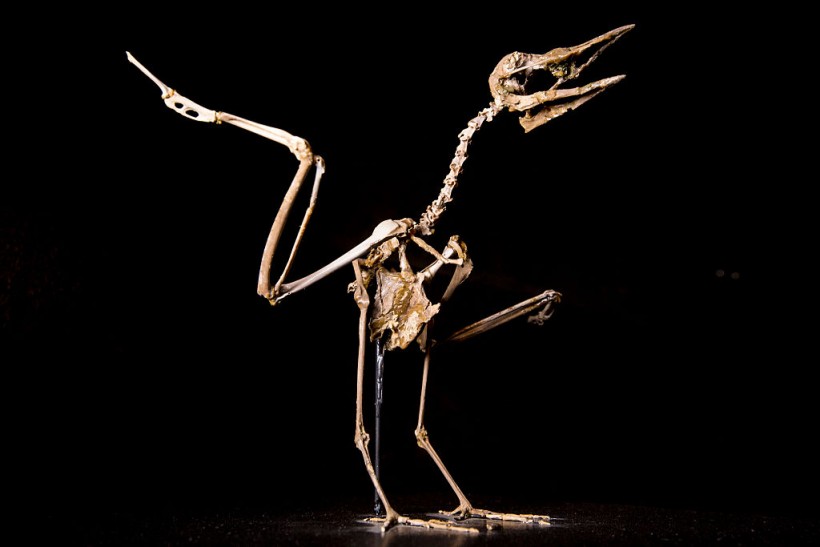Birds are the living descendants of theropod dinosaurs, but how they evolved from their reptilian ancestors is still a mystery.
One of the key questions is how birds acquired the ability to fly, which involves many changes in their body plan, such as the loss of the long bony tail and the development of the feathered wings.
To answer this question, paleontologists need to find fossils that capture the transitional stages of bird evolution.
A new avialan theropod from Fujian Province
 (Photo : Dan Kitwood/Getty Images)
(Photo : Dan Kitwood/Getty Images)

A joint research team from the Institute of Vertebrate Paleontology and Paleoanthropology (IVPP) of the Chinese Academy of Sciences in Beijing and the Fujian Institute of Geological Survey (FIGS) has discovered a new fossil link in bird evolution from Zhenghe County, Fujian Province.
The fossil belonged to a new species of avialan theropod, named Fujianvenator prodigiosus, which means "the miraculous hunter from Fujian."
The fossil is about 150 million years old, dating back to the Late Jurassic period.
Fujianvenator is a small and slender animal, with a body length of about 1.2 meters and a weight of about 5 kilograms.
It has a short and deep skull, with large eyes and sharp teeth. It has long and slender arms, with three-fingered hands that bear claws. It has a short and stiff tail, with only 14 vertebrae, long and slender legs, with four-toed feet that have claws, and it is covered with feathers, but it is not clear if it has wings or not.
Fujianvenator exhibited a bizarre combination of features that are shared with other avialans, troodontids, and dromaeosaurids, showing the impact of evolutionary mosaicism in early bird evolution.
For example, it had a short tail like avialans, but it lacked the fan of feathers that are typical of flying birds.
It had a large brain and keen vision like troodontids, but it lacked the sickle-shaped claw on the second toe that is characteristic of these dinosaurs.
It also had long legs like dromaeosaurids, but it lacked the enlarged nasal opening that is common in these dinosaurs.
Also Read: New Feathered Dinosaur Challenges Bird Evolution Theory
The ecological implications of Fujianvenator
The researchers suggested that Fujianvenator lived in a swamp-like environment and was a high-speed runner or a long-legged wader.
The elongated lower leg and other morphologies indicate that the Fujianvenator was adapted to run fast on land or wade in shallow water, where it could hunt for fish or other prey.
This represented a previously unknown ecology for early avialans, which were mostly arboreal or terrestrial animals.
The researchers also proposed that Fujianvenator was part of a diverse and unique terrestrial fauna named the Zhenghe Fauna.
The Zhenghe Fauna included other vertebrates, such as teleosts, testudines, and choristoderes and was formed during the Late Jurassic-Early Cretaceous, when southeastern China underwent intensive tectonic activities due to the subduction of the paleo-Pacific plate.
This resulted in widespread magmatism and coeval fault-depression basins, where Fujianvenator was found.
The Zhenghe Fauna is comparable to the older Yanliao Biota in north and northeastern China, where other Jurassic avialans are preserved.
It fills the gap of about 30 million years before the oldest known record of Cretaceous birds, and showed the extraordinary diversity and complexity of early bird evolution.
Related article: Primitive Wings of Early Birds Shed Light on Flight Evolution
© 2024 NatureWorldNews.com All rights reserved. Do not reproduce without permission.





